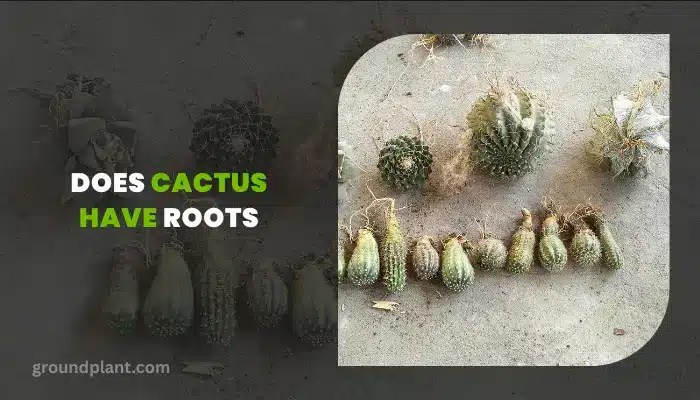In the arid landscapes of deserts worldwide, cacti stand out not only for their striking appearances but also for their remarkable adaptability. One common curiosity that arises when observing these resilient plants is: do cacti actually have roots? The answer to this question is both straightforward and intricate, revealing much about the survival techniques of these amazing organisms.
Understanding the root systems of cacti is crucial to appreciating their role in ecosystems and their unique adaptations as desert dwellers.
Exploring Cactus Root Structures
Cacti, like most flowering plants, possess roots. However, their root systems are distinctly different from those of many other flora. A typical cactus might have shallow, extensive roots that spread out horizontally rather than growing deeply into the ground. This adaptation serves a vital purpose: it allows the plant to absorb water from infrequent rainfalls and morning dew. The surface-oriented roots can quickly capture any moisture before it evaporates in the harsh sun.
Some cacti also develop taproots, which delve deeper into the soil to reach underground water sources. This type of root structure provides stability and is beneficial during prolonged droughts. The combination of shallow and deep roots demonstrates cacti’s evolutionary prowess in adapting to their environments. The variety in root systems among different cactus species further highlights their specialized adaptations to diverse habitats, from rocky terrains to sandy dunes.
Navigating Nutrient Acquisition
In addition to water, roots play a significant role in nutrient absorption. Cacti root systems are finely tuned to extract essential minerals from the soil. These nutrients, which include nitrogen, phosphorus, and potassium, are critical for the growth and reproductive success of the plant. Interestingly, many cacti form symbiotic relationships with fungi in the soil, a phenomenon known as mycorrhiza. This partnership enhances nutrient uptake efficiency, allowing cacti to thrive in environments with low soil fertility.
The superficial roots of cacti also enable them to utilize rainfall efficiently. After a rain event, the plant’s roots quickly absorb the water, storing it for future use. This adaptation allows cacti to withstand extended periods of drought without significant stress. Understanding this nutrient acquisition strategy underscores the ingenuity of cacti in surviving in their extreme environments.
Root Behavior During Drought
One of the most fascinating aspects of cactus roots is their ability to respond to drought conditions. Unlike many non-desert plants that become dormant during water scarcity, cacti demonstrate a remarkable form of resilience. When water becomes scarce, a cactus can reduce its metabolic activity, employing a strategy called crassulacean acid metabolism (CAM) for photosynthesis. In this strategy, the cactus opens its stomata at night to minimize water loss through evaporation, while the roots continue to absorb moisture whenever available.
Furthermore, during severe drought, a cactus can initiate a process known as root pruning. The plant may shed some of its roots to conserve energy and resources, focusing on maintaining only the most vital structures necessary for survival. This adaptive behavior provides insight into the complex interplay between a cactus’s growth and its environmental challenges.
Cacti Root Systems and Environmental Impact
The root systems of cacti do more than ensure survival for the individual plants; they play a significant role in their ecosystems. By stabilizing the soil, cactus roots help prevent erosion, especially in sandy or loamy terrains. This aspect is crucial for maintaining the integrity of desert landscapes, which can be highly susceptible to degradation.
Additionally, cacti contribute to the health of other plants within their vicinity. Their roots can alter the local microenvironment, enhancing moisture retention in the soil, benefiting neighboring flora. This relationship showcases not just the survival mechanisms of cacti but also their ecological importance.
Surprising Interdependencies in the Desert
In the vast deserts where cacti thrive, interdependencies between plants, animals, and fungi manifest in remarkable ways. Cacti often attract various organisms, including birds, insects, and even mammals, which benefit from the nutrients and hydration the cacti provide. The roots, being the foundational components of these plants, support not only the cacti but also the myriad forms of life that rely on them for sustenance.
Moreover, the aforementioned mycorrhizal relationships underscore the extraordinary collaborations that exist beneath the surface. By linking different plant species, the roots create a vast network that enhances nutrient sharing and resilience against adverse conditions.
Conclusion: The Cactus is More Than Meets the Eye
The inquiry into whether cacti have roots reveals a layer of complexity that emphasizes their significance in the natural world. Their unique root structures are not merely survival adaptations; they are integral to their ecosystems’ health and vitality. By examining the behaviors and relationships associated with cactus roots, one gains a deeper appreciation for the myriad ways these fascinating plants endure and thrive.
The next time you encounter a cactus, consider what lies beneath the surface. The roots are not just anchors in the soil; they are the lifelines connecting these incredible plants to their environment, facilitating their survival and the prosperity of many dependents in the harsh desert expanse.





Leave a Comment